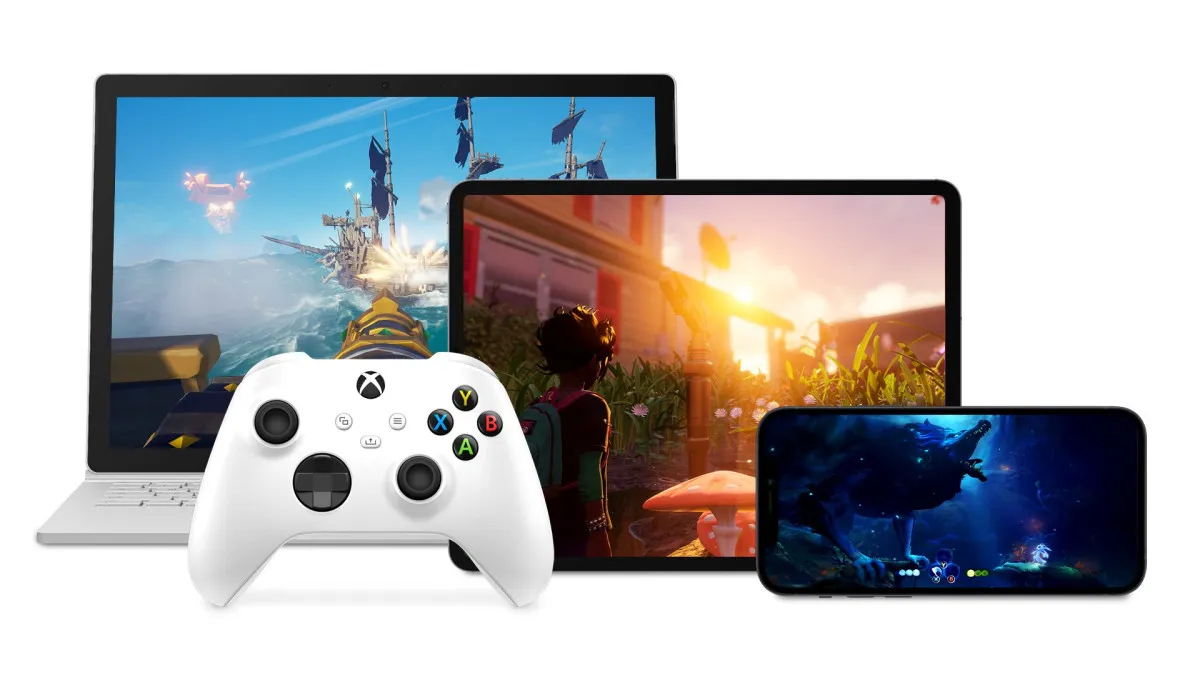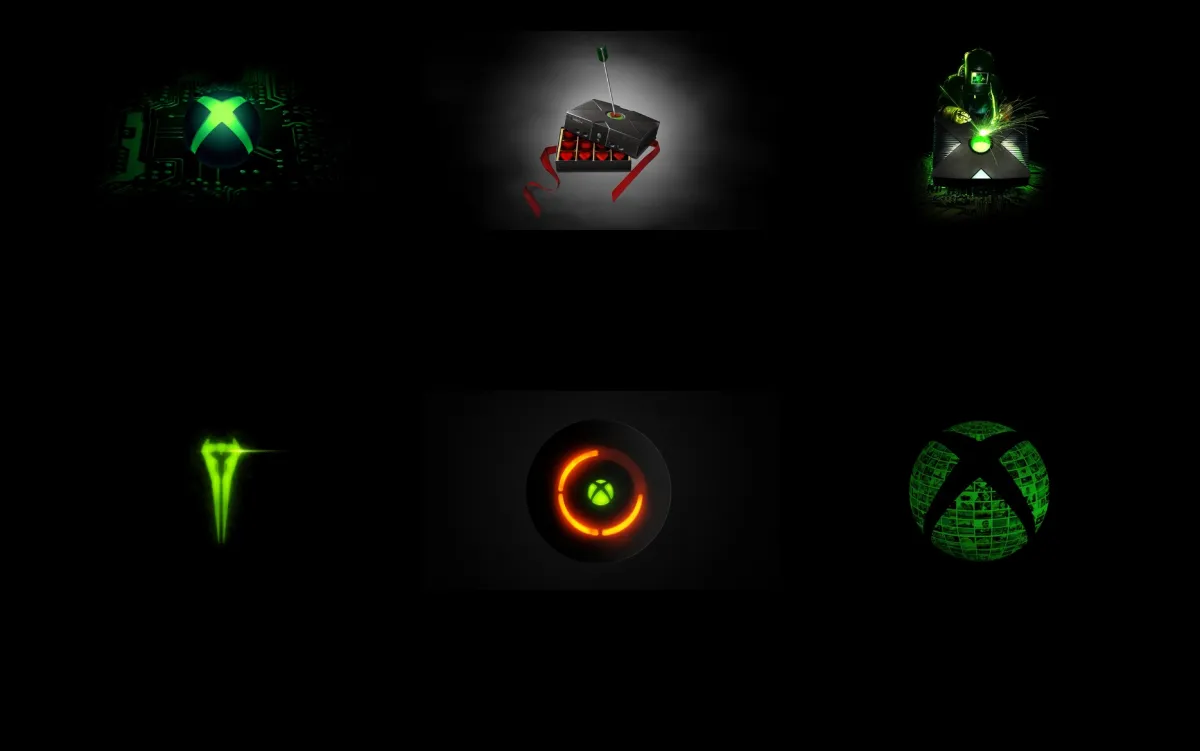We finally know what’s in the box
It’s no secret that Microsoft was fighting an uphill battle with the Xbox One. The initial announcement of the draconian DRM strategy did not go over well, with Sony and the gaming community at large taking every opportunity to dunk on it. But over time, the console landscape shifted dramatically. Microsoft, along with Phil Spencer, completely changed the conversation.
Xbox Games with Gold provided players with permanent copies of 360 games. Microsoft extended its hand to other publishers, opening the floodgates for cross-platform play — while Sony opposed the program for another year, only relenting for certain big-ticket games. Xbox Game Pass utterly shifted the landscape of “generations,” becoming the first major successful “Netflix for games” concept.
That philosophy extends to the Xbox Series X family.
[Since this is our first of the two new hardware reviews, here’s a quick side note. We’ve made both articles fairly uniform, so you can compare and contrast them together when the PS5 review hits. You can find our Xbox Series X unboxing article here.]

The hardware
The Xbox Series X is approximately 11.85 inches tall and 5.94 inches wide/deep. That is decidedly not as big as the PS5, so you’re going to have a much easier time fitting it into your setup. But before we get into comfort, let’s talk about specs.
Here’s a quick raw list (I’ll do the same for the PS5):
- CPU – 8X Cores @ 3.8 GHz (3.6 GHz w/SMT) Custom Zen 2 CPU
- GPU – 12 TFLOPS, 52 CUs @1.825 GHz Custom RDNA 2 GPU
- 16GB GDDR6 w/320 bit-wide bus
- Custom 1TB NVME SSD. 2.4 GB/s (Raw), 4.8 GB/s (Compressed, with custom hardware decompression block)
Touching on another tech spec, Microsoft boasts a “whisper-quiet fan,” that in my experience, is accurate nomenclature. Now you might be thinking about all of those overheating reports: and I have to say, so far, I haven’t had any problems on that front. The Series X has never sounded particularly loud, nor has there been any excessive heat surrounding it.
In fact I’ve had very little problems at all with the machine, all the way down to ease of use. One thing that seems small enough but was huge for me was the introduction of tiny little dots on the back of the Xbox to identify which port was which. Now things like the Ethernet port and the power cable might seem obvious, but the USB locations are even easier to pinpoint now.
Then there’s the controller. Again, Microsoft’s big thing is backward compatibility: so any old Xbox One gamepad will work, from the Elite to the Elite 2, to the Xbox One S line. But the Series X also comes with a new controller that has subtle enhancements. The big new thing is the share button, which isn’t new to any PS4 owners. Can I just say though how much I appreciate that it’s a separate button in addition to the other two? You still have the start/select buttons (sorry Microsoft, they’ll always be start and select to me) at your fingertips.
It also sports Bluetooth Low Energy (BTLE) support, which facilitates an easier pairing process. Microsoft boasts Dynamic Latency Input (DLI) for the Series S/X lines, with “reduced latency” for games in general. Alongside of the snappy D-pad I haven’t noticed anything amiss: the controller is great and iterates on an already strong foundation.
Although I do like the out-there look of the PS5, I’ll go on record saying that I’m a huge fan of the Xbox Series X design. I’ve had to get back behind it numerous times with various cables; so not only is the bump-guide useful, but the box itself is extremely easy to move around my TV stand. It kind of just glides around effortlessly without feeling like dropping it could shatter my bones.
[Update: We had the chance to check out the “Razer Kaira Pro for Xbox” headset, which was able to bring out some of the strengths of the Series X’s audio. Although Sony has been touting the PS5 as supporting “3D audio,” the tech has been around for a while and the Series X also allows for Dolby Vision specifications. The headset was plug and play, syncing to the Xbox in around 15 seconds.
The headset itself is comfortable, which is a must given that I’m going to be playing this system well into 2021 on a full-time basis. It also has a fair few bells and whistles, like a detachable mic, onboard mute toggle, and the ability to allow for a multi-function Bluetooth connection: if you want to use it on other devices quickly. Like Sony’s PS5 headset, the Kaira Pro (or any quality headset) helps up the “wow” factor of next-gen.

The user interface experience
This section is going to be fairly short, as you already have access to the Xbox Series X user interface if you own an Xbox One.
A couple of weeks ago Microsoft unleashed the new UI (which was mostly a shored-up version of the previous iteration) into the world, giving us a preview of what the next generation is going to look like. And honestly? I’m more than okay with it. While everyone constantly clamors for the return of the “blade” menu style of old, I’ve found the Xbox One UI to be extremely reliable and user-friendly for many years now. Pins are just too dang convenient and customizable. Oh, plus they instantly transfer from your existing setup on prior consoles. I was fully set up and ready to go using a mobile app process in a few minutes from unboxing to go time.
It helps that everything is faster on the Series X. Half-second stuttering is basically a thing of the past now, which goes a long way when the games themselves are quicker. This is arguably what feels the most “next-gen” to me having played both new consoles. Because I was playing several Xbox One/PS4 games for review in tandem with my next-gen research, I could directly compare them, and found it difficult (but not impossible, of course) to go back.
We’ll get to that in a second.

What about all your old stuff?
Given the lack of first-party games at this time, the loss of Halo Infinite‘s 2020 release, and the whole “games are coming out on Xbox One and Series X” strategy, you’re going to be spending at least some of your time playing old games. The good news is, that experience is better than ever.
One big Xbox Series X feature that extends to all games (including old ones) is “quick resume,” which quite literally brings you back into games after putting them on ice. This one really depends on the game, as my quick-resume tests took anywhere from two to ten seconds. The most insane thing to me is how Microsoft is committed to going back multiple generations. Playing Fuzion Frenzy with visual upgrades and quickly launching into the game is something else; and already timeless titles like Jet Set Radio look as vibrant as ever.
With fast internet you can download anything, install it, and be playing in less than a minute. Select games will also feature more enhancements than the automatic ones Microsoft baked into the Series X. I quick-changed to Minecraft Dungeons, then swapped back to Sekiro in a few seconds. Then I loaded up Cuphead and my save was instantly synced from Xbox One. Swapping back to Sekiro, I played for a while on Series X, and was able to quickly sync my save back to my Xbox One in another room.
Let’s talk about load times for a second. The SSD doesn’t just boost newer games, as nearly all of my testing (all internal HDD to internal SSD) yielded positive results for quicker loads with the Series X. First up, a first-party game that probably should benefit from these loads: Gears 5.
On the Xbox One, Gears 5 took 8.07 seconds to boot up and 45.11 seconds to load into a game from the main menu. On Series X, it took 4.05 seconds to boot and 8.31 seconds to load in. That’s a significant change.
From there I moved on to a AAA third-party release with Sekiro. On the Xbox One it took 8.14 seconds to boot, with 21.52 seconds (classic From Software load screens) to load from a save. On Series X, it took 2.05 seconds to boot up with 5.81 seconds of loading screens from a save.
Even games like Cuphead, which weren’t particularly taxing from the get-go, see improvements. On Xbox One it took 11.49 seconds to boot up, with 3.85 seconds to load into a level. On Series X, it took 3.05 seconds to boot with a 1.42 second load.
My next significant test involved a 360 title: NiGHTS Into Dreams. On Xbox One it booted in 13.98 seconds, with 9.37 seconds to load into a level. On Series X, it booted in 1.87 seconds, though it took the same amount of time to load as the sequence was scripted.
It’s funny, because most of the time the intros in older games take longer than the total loadtime from booting the game up to actually loading into a level. Skippable intros are likely something you’re going to see more of going forward: you will notice them once you’re used to these fast loads. The only holdup is disc-based loads, which still take roughly the same amount of time as they always have.
As for “updated for Series X” games, Forza Horizon 4 now has native 4K UHD support at 60FPS and faster load times. Gears 5 now runs at 4K UHD and 120FPS. The best part? All of these upgrades are instant and free if you own the originals because of the Smart Delivery system. Microsoft was genius to create and market this no-frills “am I getting an upgrade or not?” concept, because it made my review period that much easier, not having to guess which games I could carry over. Saves instantly copy over from the cloud with no fuss and no cloud limits.
I even went the extra mile for this test and hooked up my old Guitar Hero guitar accessory for use in Rock Band 4 — and tested all of my song DLC imports. All good, both on a physical and digital level. My Logitech G2920 racing wheel? Also works wonderfully out of the box and plays great with the beautifully upgraded Forza Horizon 4.
This is how all future generations should be.

What about all the new stuff?
I’ve had access to a 4K HDR TV for a while now, but with the Xbox Series X, it finally feels like it’s being put to work. The quick-resume feature is at its best when shown off with newer games, but several titles are also finally starting to bring us into the era of 1080p60 or 4K60.
A lot of this functionality depends on the developer. For instance, some titles heavily rely on online communication or server-based data: like Destiny 2. While Bungie could theoretically make games load quicker on new devices, other studios could bungle the support and not approach anywhere near 4K60 (or 4K120 in the case of a few first-party titles). Several studios have compromised by making you choose between native 4K or 60 FPS. Unlike the SSD which can take care of load times in one fell swoop, the graphical side of “next-gen” is a bit murkier. With that in mind, a sorting function in your game library to see what exactly has been optimized for the Series X is a great idea carried over from the Xbox One X optimization label.
Since Microsoft doesn’t have any major first-party titles to test out, I was able to try several “next-gen” experiences, including Yakuza: Like a Dragon (the only one I can talk about right now publicly). Not all third-party games load instantly or look mind-blowingly different (something we will be addressing in individual reviews where applicable). Although I can’t mention specific titles just yet because of staggered embargoes, several of them had loads of anywhere between five to ten seconds. I know ten-second loads are kind of a low-priority thing to complain about, but given how some other games are instantaneous (including Astro’s Playroom on PS5, which I can talk about in a limited fashion), it’s important to note that SSD integration and optimization is not going to work automatically.
Another important factoid to be aware of is that the Xbox Series X has 802GB of usable SSD space. While SSDs are all the rage for a reason, that’s basically “four Call of Dutys” worth of storage. The Series X isn’t alone in that the PS5 has a similar problem: though you can hook up a standard HDD on Series X and run old games off of it (or transfer new ones to the SSD). In my experience, my old Xbox One drive was plug-and-play compatible. Once it was hooked up, everything loaded and I could transfer older titles to and fro as usual.

Overall thoughts
Sony and Microsoft have completely different views on what the next generation entails, which is good news for everyone: you have an actual choice in terms of what platform to support, if you’re not buying both.
Although my time with the PS5 has felt very “new,” I wholly appreciate Microsoft’s commitment to the old. Microsoft has been honing its craft for years with the Xbox One, providing cross-generational backward compatibility going all the way back to the original Xbox. All of my Xbox One controllers work with this system and Microsoft developers have taken it upon themselves to make backward compatibility really pop with automatic enhancements. Game Pass works day one and allows players to instantly load out an arsenal of games.
I can’t stress this enough: Microsoft hasn’t gotten enough credit for completely turning around the messaging of the Xbox One, and now is the time for all of that hard work to come back to roost. They’re getting this generation started on the right foot and I hope it pays off.
[This review is based on hardware provided by the manufacturer.]




